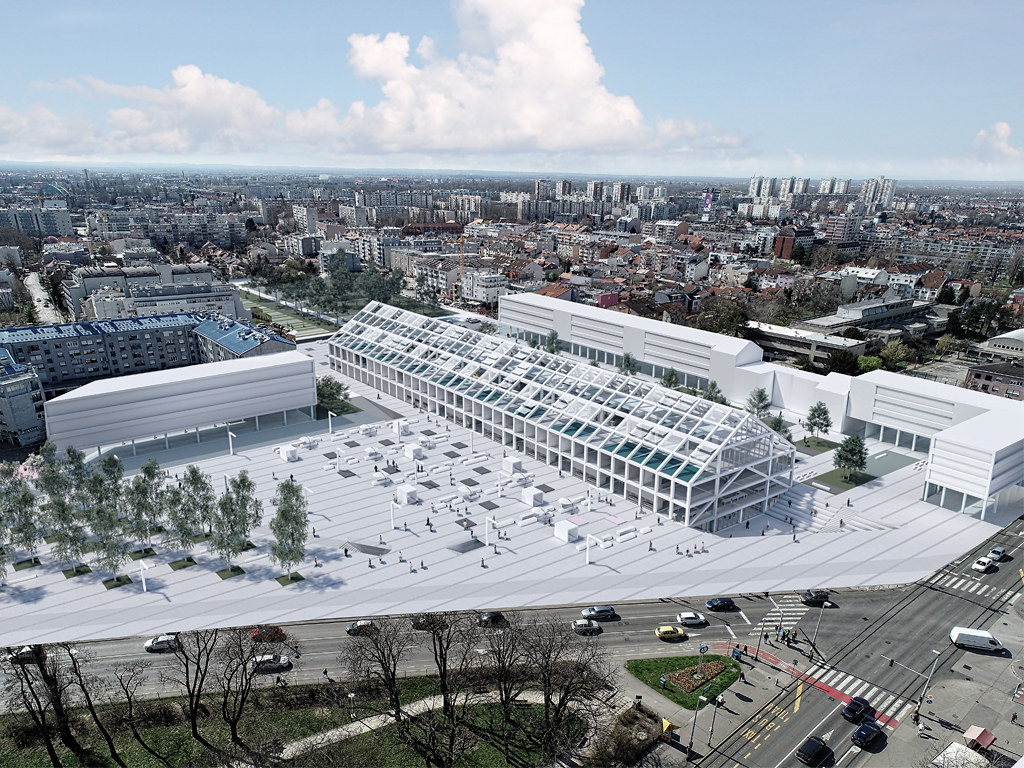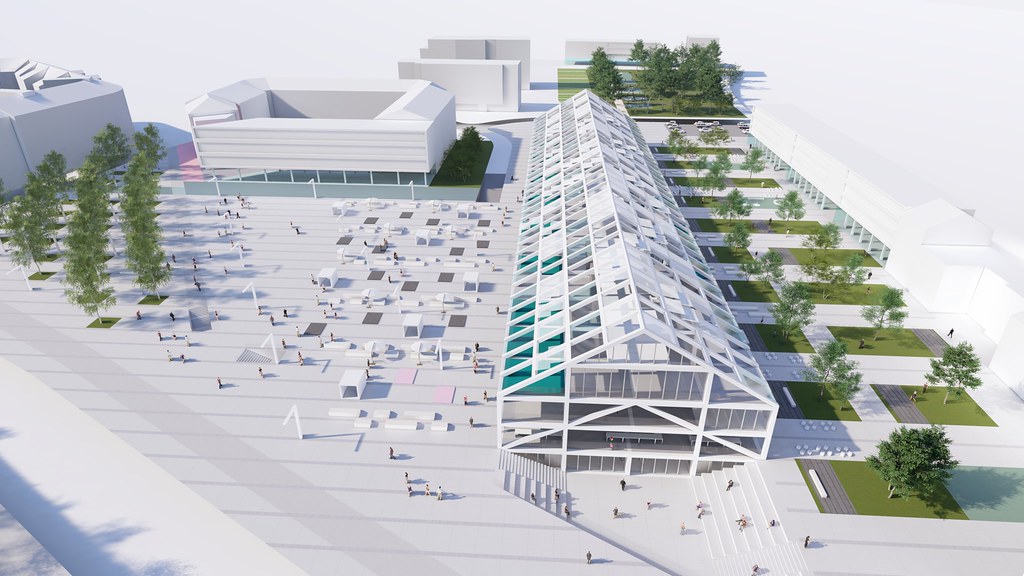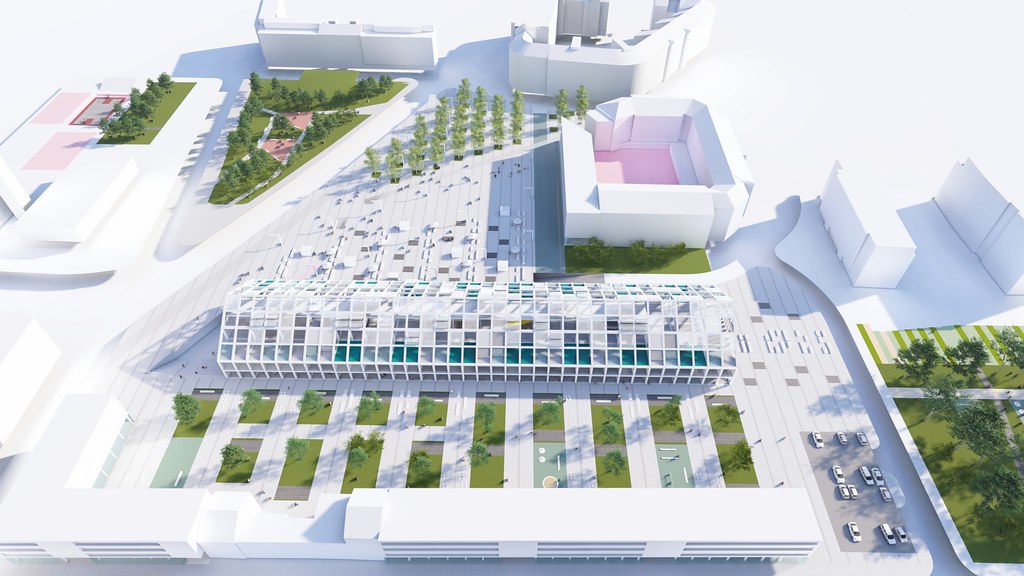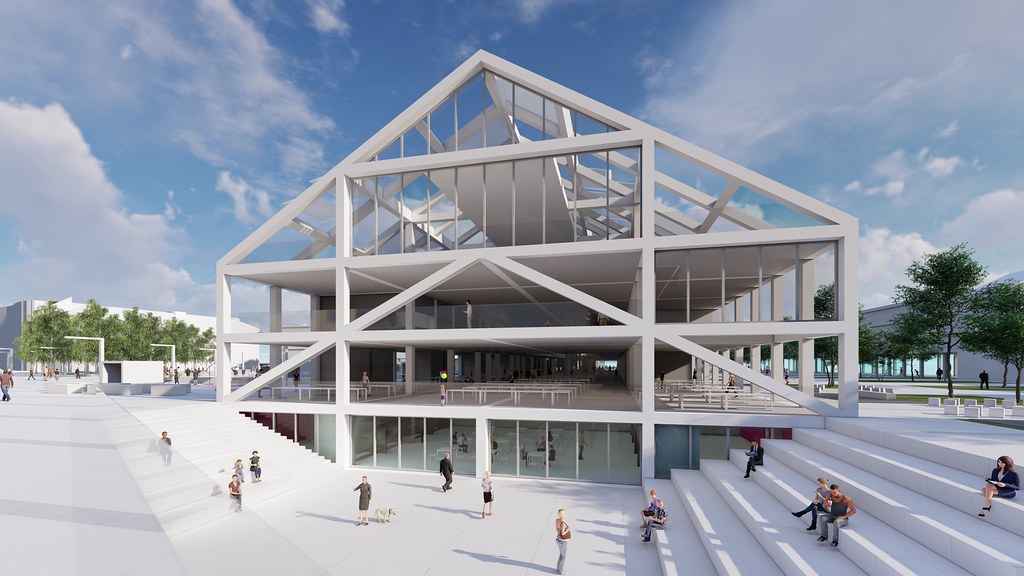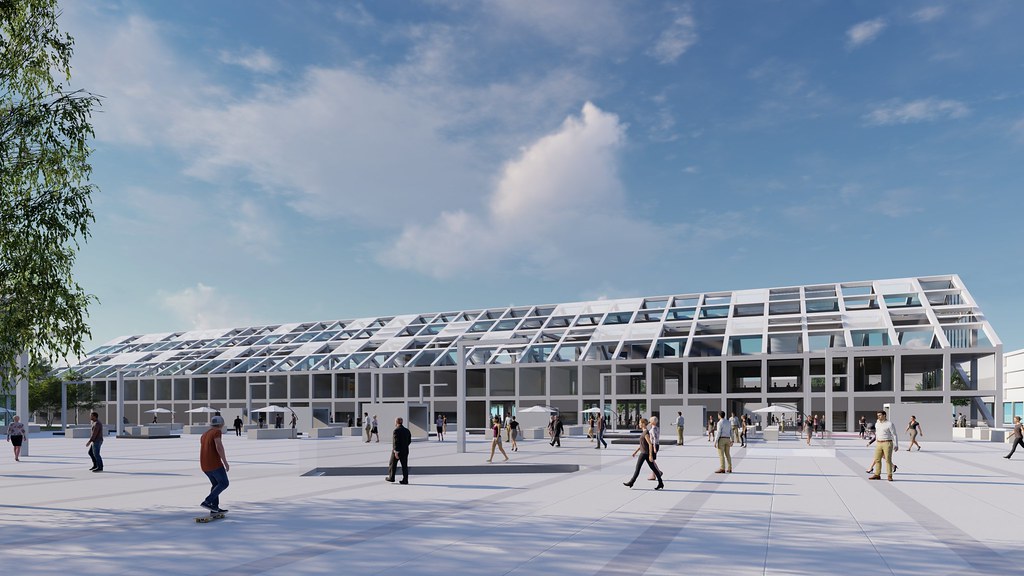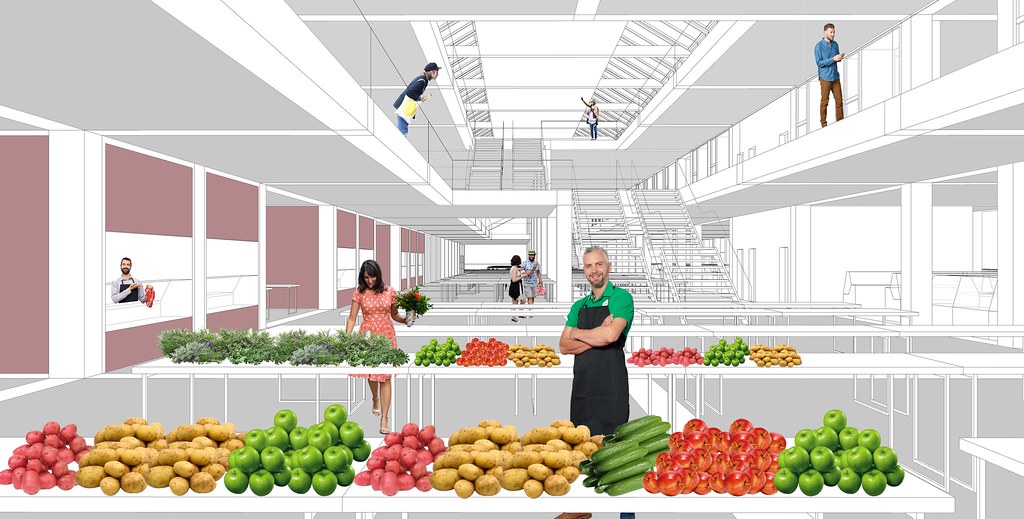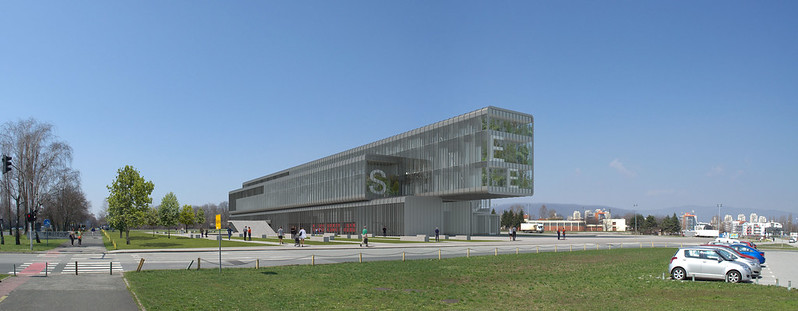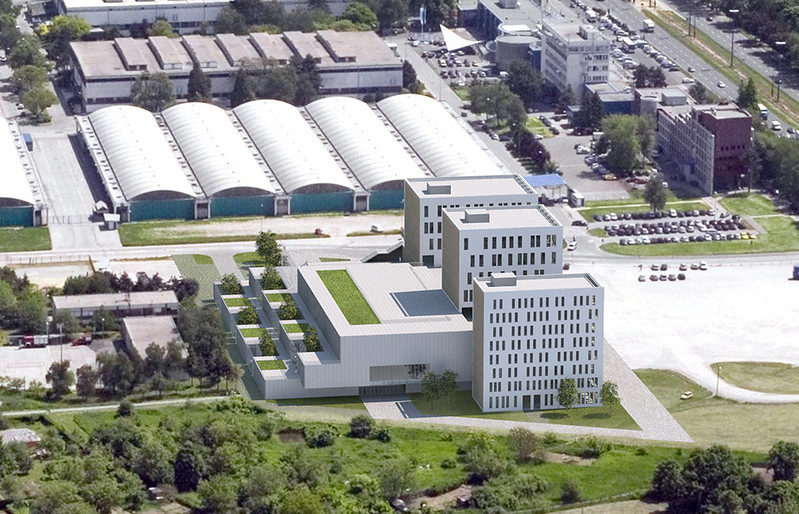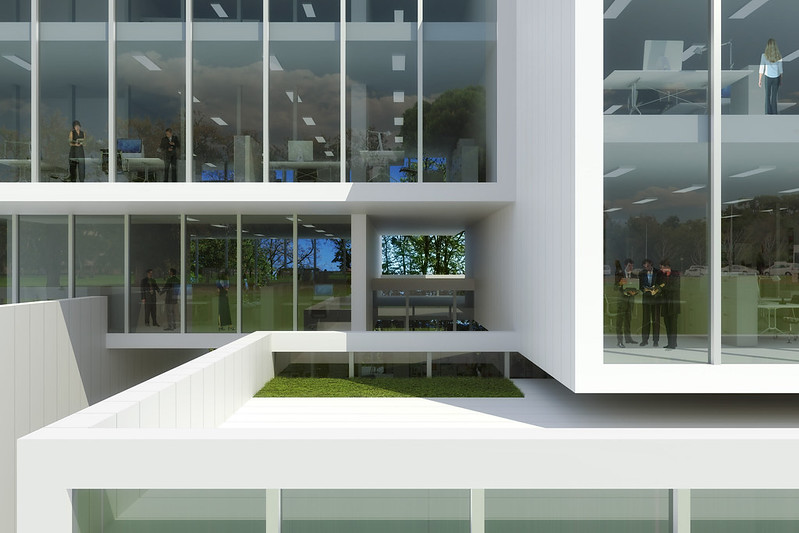The architectural-urban solution of the space of the center of Trešnjevka simultaneously accepts the main spatial-historical determinants of the subject scope and realizes the articulation of various spatial influences. The articulation of this space includes the optimization of space through the organization and introduction of a uniform but flexible urban geometry which aims to fix the scope into a common and recognizable urban whole with the potential of the city center. The concept is based on contemporary principles of modularity and flexibility, which introduce the principles of organization, order and economy into the design of public urban space. The combination of a strip-mounted grid serves as a matrix to meet different requirements: from rational-utilitarian to free and playful.
The axis of the market building placed on the site of the existing market defines the context and the urban design matrix that flows into the outdoor spaces with which it is in direct contact. The area east of the market is organized as an open square, and the relatively larger area of the square is reduced to a more humane scale by introducing an urban grid, dividing it into zones of different character and layering the regime of use. The area close to the market functions as a soft transitional space between the city square and the market space to which it is connected, and is used occasionally for outdoor fairs and other events. The central more open part of the square envisages the possibility of forming an open-air stage, public gatherings and outdoor exhibitions. To the west of the market, a number of outdoor spaces are also formed, which function as an inner urban courtyard, gently shaped ground floor areas in which green areas and spaces for play and socializing alternate.
